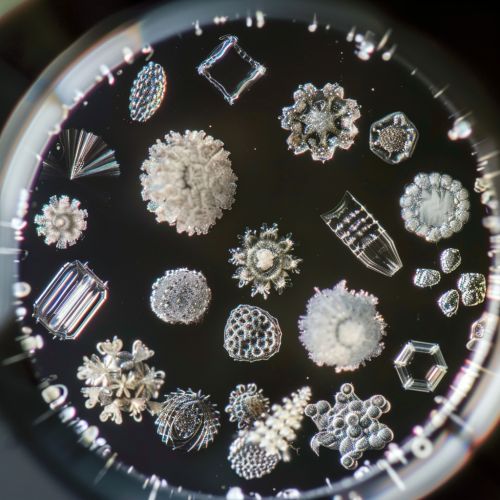Particle Shape
Introduction
Particle shape, also known as particle morphology, refers to the physical structure and form of particles, which can range from perfectly spherical to highly irregular. The shape of particles can significantly influence the physical and chemical properties of a material, including its flowability, packing, segregation, and reactivity. Understanding particle shape is crucial in numerous fields such as materials science, chemistry, physics, and geology.


Determination of Particle Shape
Particle shape can be determined through several methods, each with its own advantages and limitations. Common techniques include optical microscopy, electron microscopy, and image analysis. More advanced methods such as X-ray diffraction and laser diffraction are also used for more precise measurements.
Optical Microscopy
Optical microscopy is a simple and commonly used method for determining particle shape. It involves examining a sample under a microscope and visually assessing the shape of the particles. However, this method is subjective and may not provide accurate results for particles that are too small or irregular.
Electron Microscopy
Electron microscopy provides a more detailed view of particle shape due to its higher resolution compared to optical microscopy. It uses a beam of electrons instead of light to form an image, allowing for the examination of particles at the nanometer scale.
Image Analysis
Image analysis involves the use of software to analyze images of particles obtained through microscopy. This method can provide quantitative data on particle shape, such as aspect ratio, roundness, and compactness.
X-ray Diffraction
X-ray diffraction is a technique used to study the crystallographic structure of a material, which can provide information on particle shape. However, this method requires a high level of expertise and sophisticated equipment.
Laser Diffraction
Laser diffraction is a method used to measure the size distribution of particles, which can be used to infer their shape. This technique involves passing a laser beam through a sample and analyzing the pattern of light scattered by the particles.
Factors Influencing Particle Shape
Several factors can influence the shape of particles, including the method of particle formation, environmental conditions, and the nature of the material itself.
Method of Particle Formation
The method of particle formation can significantly influence particle shape. For instance, particles formed through crystallization tend to have regular, geometric shapes, while those formed through grinding or milling may be more irregular.
Environmental Conditions
Environmental conditions such as temperature, pressure, and humidity can also affect particle shape. For example, high temperatures can cause particles to become more spherical due to surface tension, while high pressure can lead to more irregular shapes.
Nature of the Material
The nature of the material itself, including its chemical composition and crystal structure, can influence particle shape. For instance, materials with a high degree of crystallinity tend to form particles with regular shapes, while amorphous materials often form irregular particles.
Impact of Particle Shape
The shape of particles can have a significant impact on the properties and behavior of a material. This includes its flowability, packing, segregation, reactivity, and optical properties.
Flowability
Particle shape can greatly affect the flowability of a material. Spherical particles tend to flow more easily than irregular particles due to their lower interparticle friction.
Packing
The shape of particles can influence how they pack together. Spherical particles can pack closely together, resulting in a high density, while irregular particles may pack less efficiently, leading to a lower density.
Segregation
Particle shape can influence segregation, the tendency of different particles to separate. Irregular particles are more likely to segregate due to differences in their ability to interlock and resist movement.
Reactivity
The reactivity of a material can be affected by particle shape, as it influences the surface area available for reaction. Irregular particles typically have a larger surface area than spherical particles, leading to higher reactivity.
Optical Properties
Particle shape can also affect the optical properties of a material. For instance, the scattering of light by particles can depend on their shape, influencing the appearance of the material.
Conclusion
Understanding particle shape is crucial in many fields, as it can significantly influence the properties and behavior of a material. Various methods are available for determining particle shape, each with its own advantages and limitations. The shape of particles can be influenced by several factors, including the method of particle formation, environmental conditions, and the nature of the material itself.
